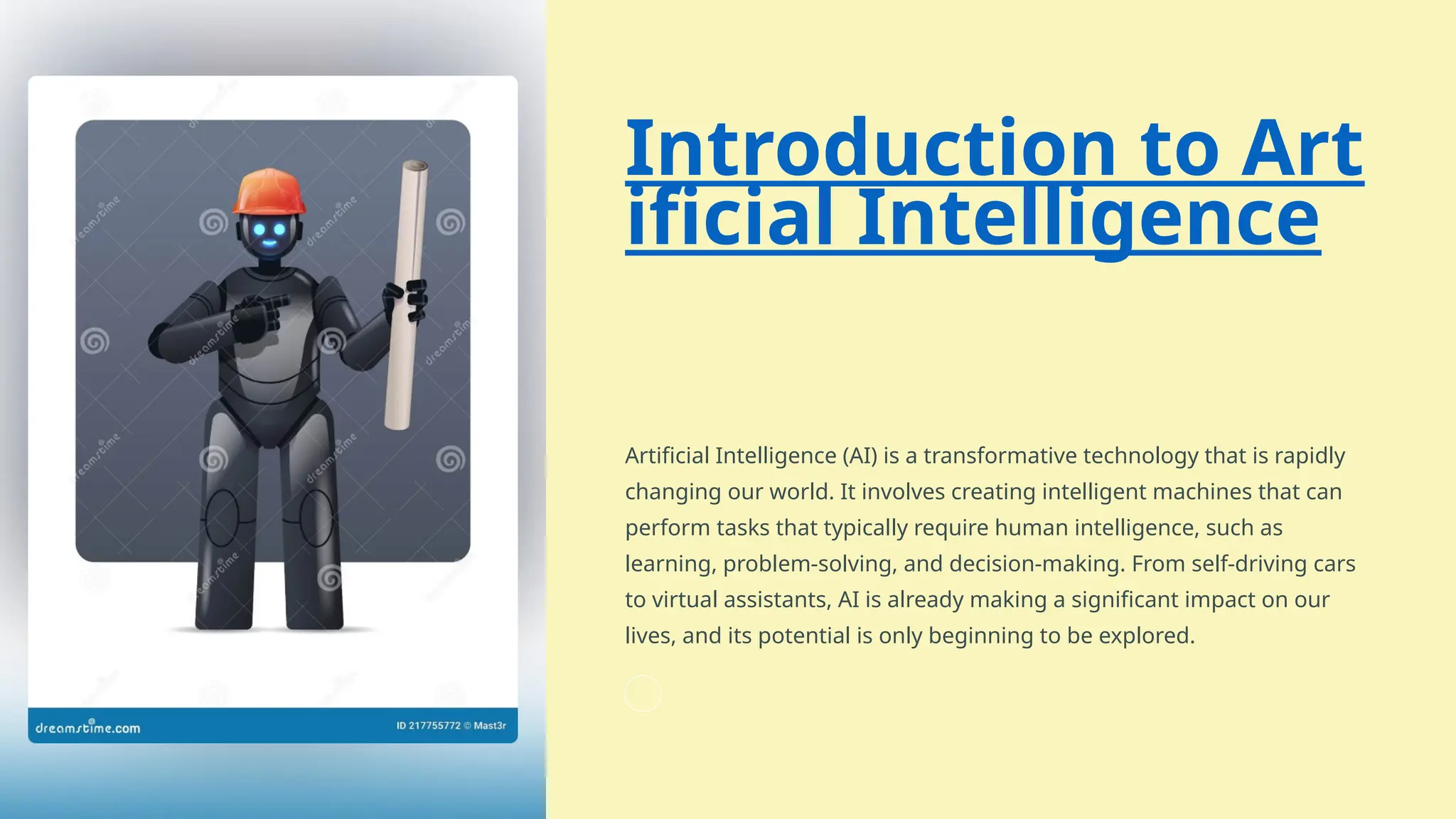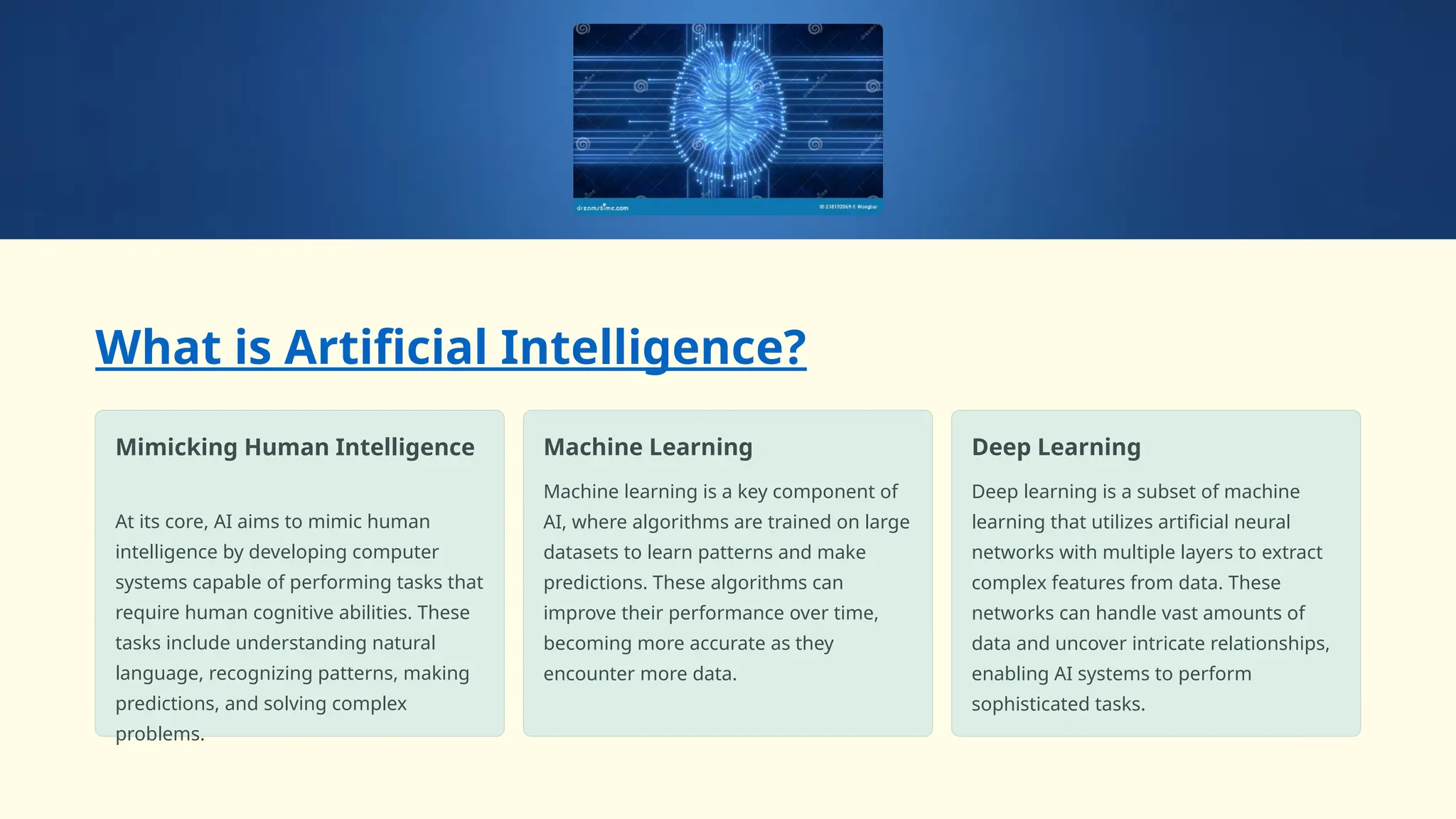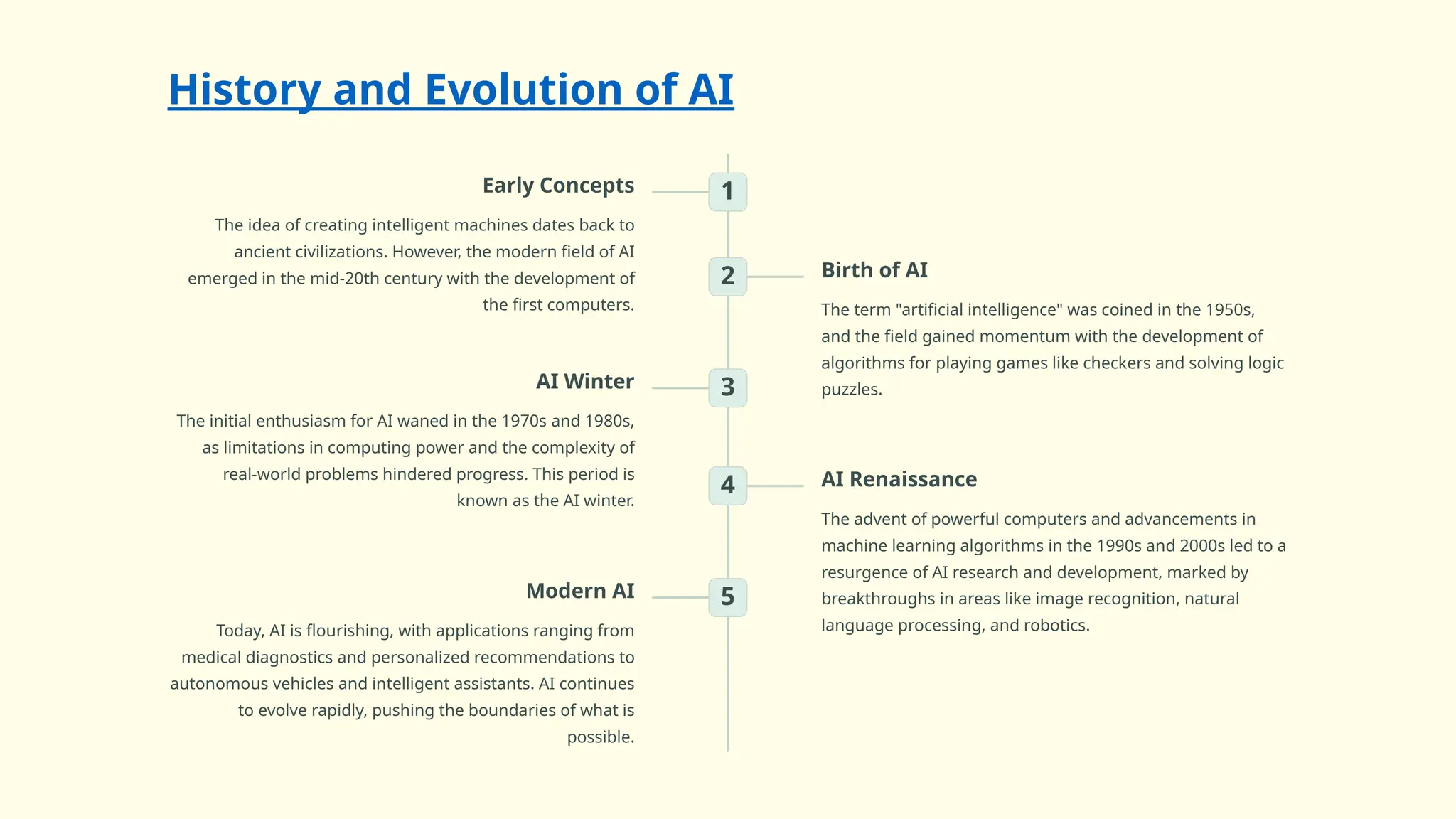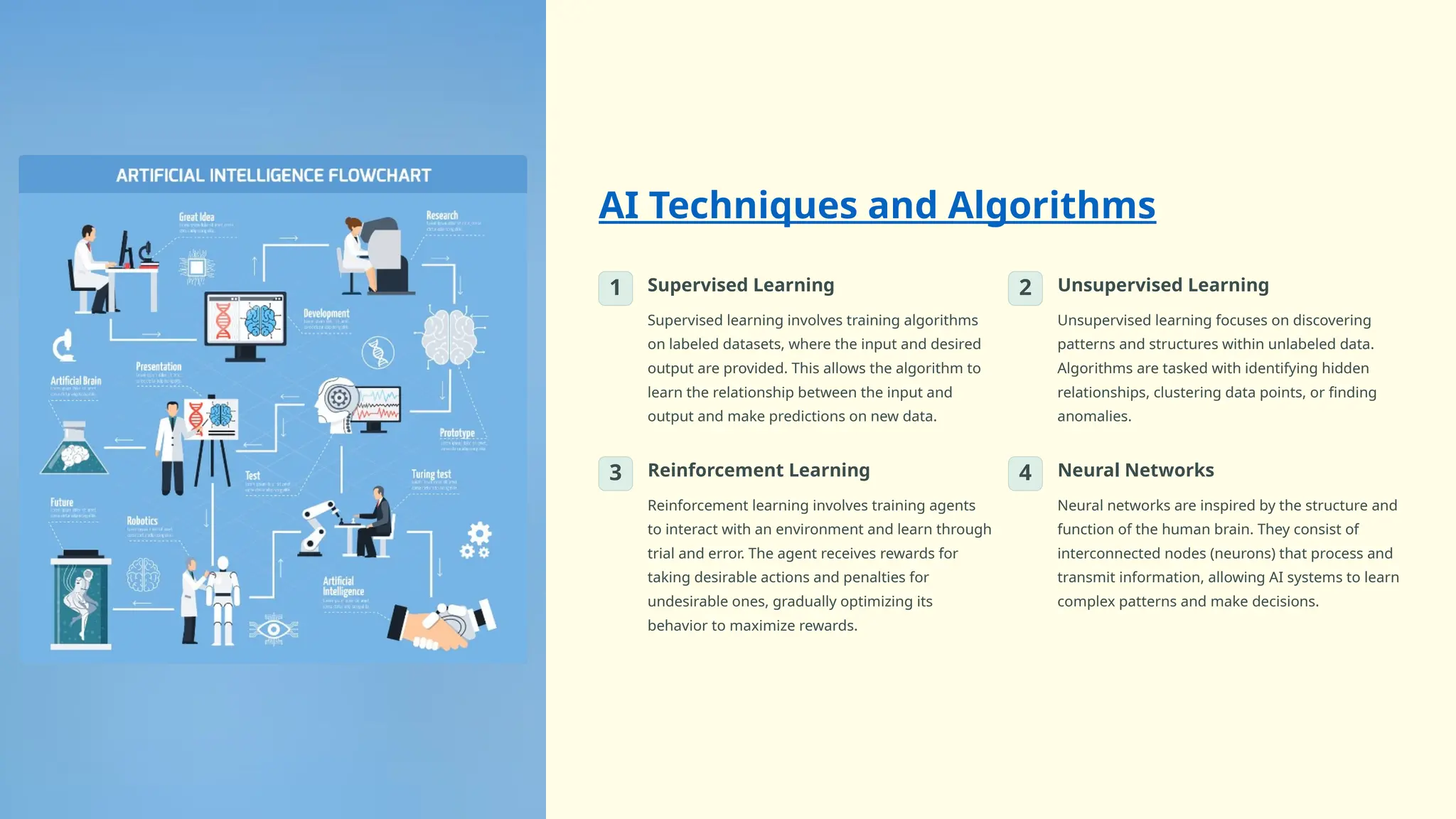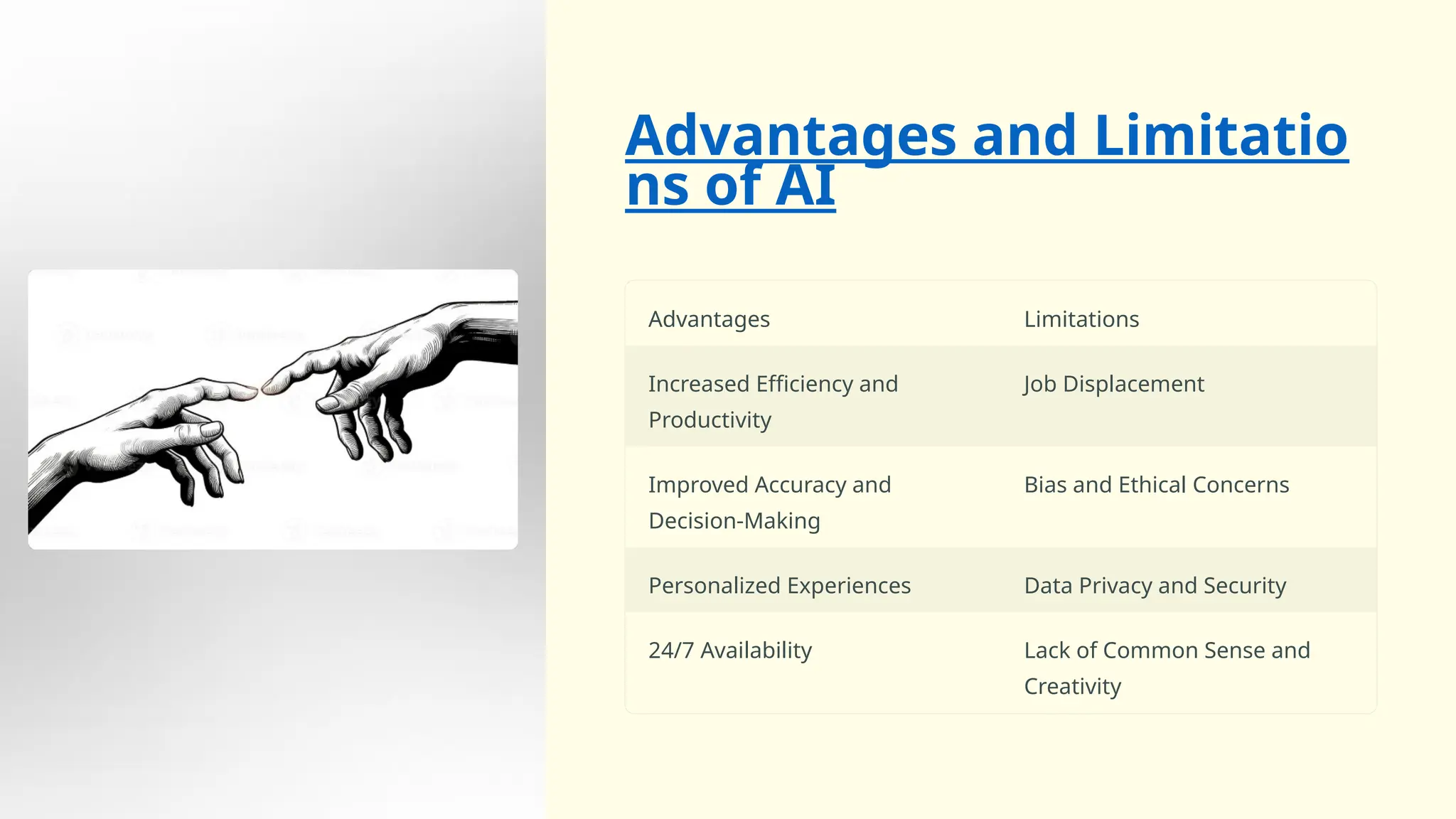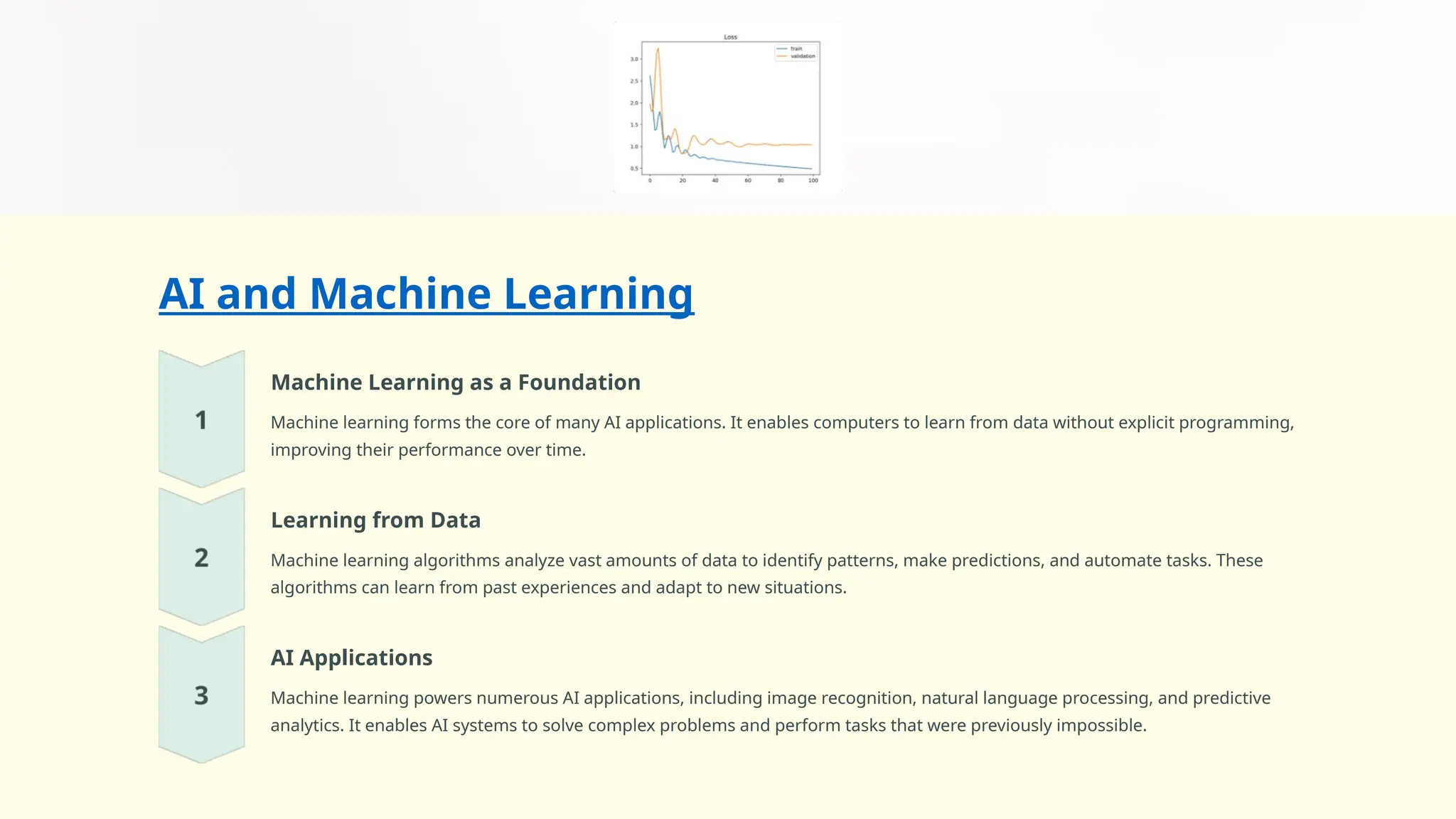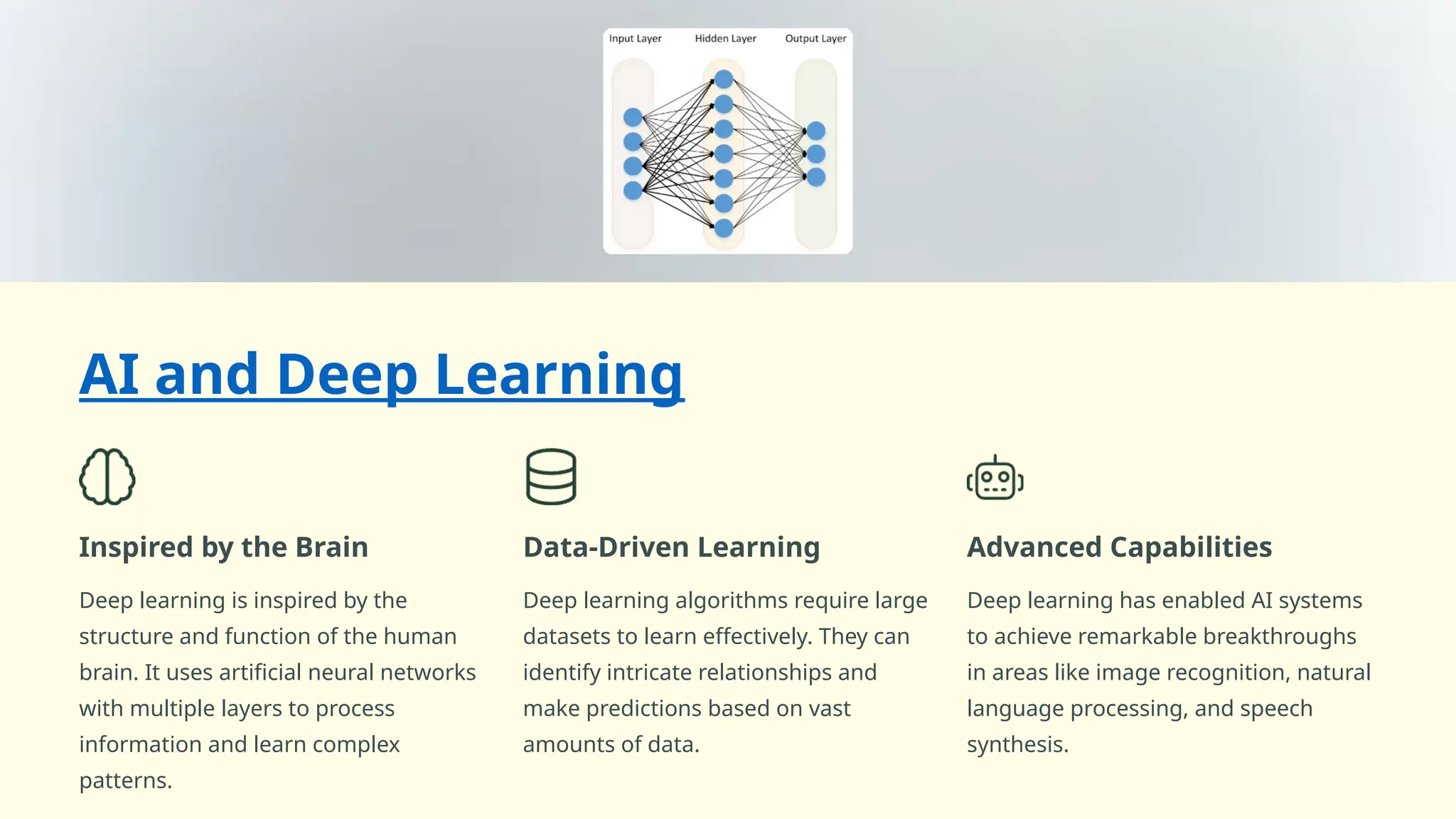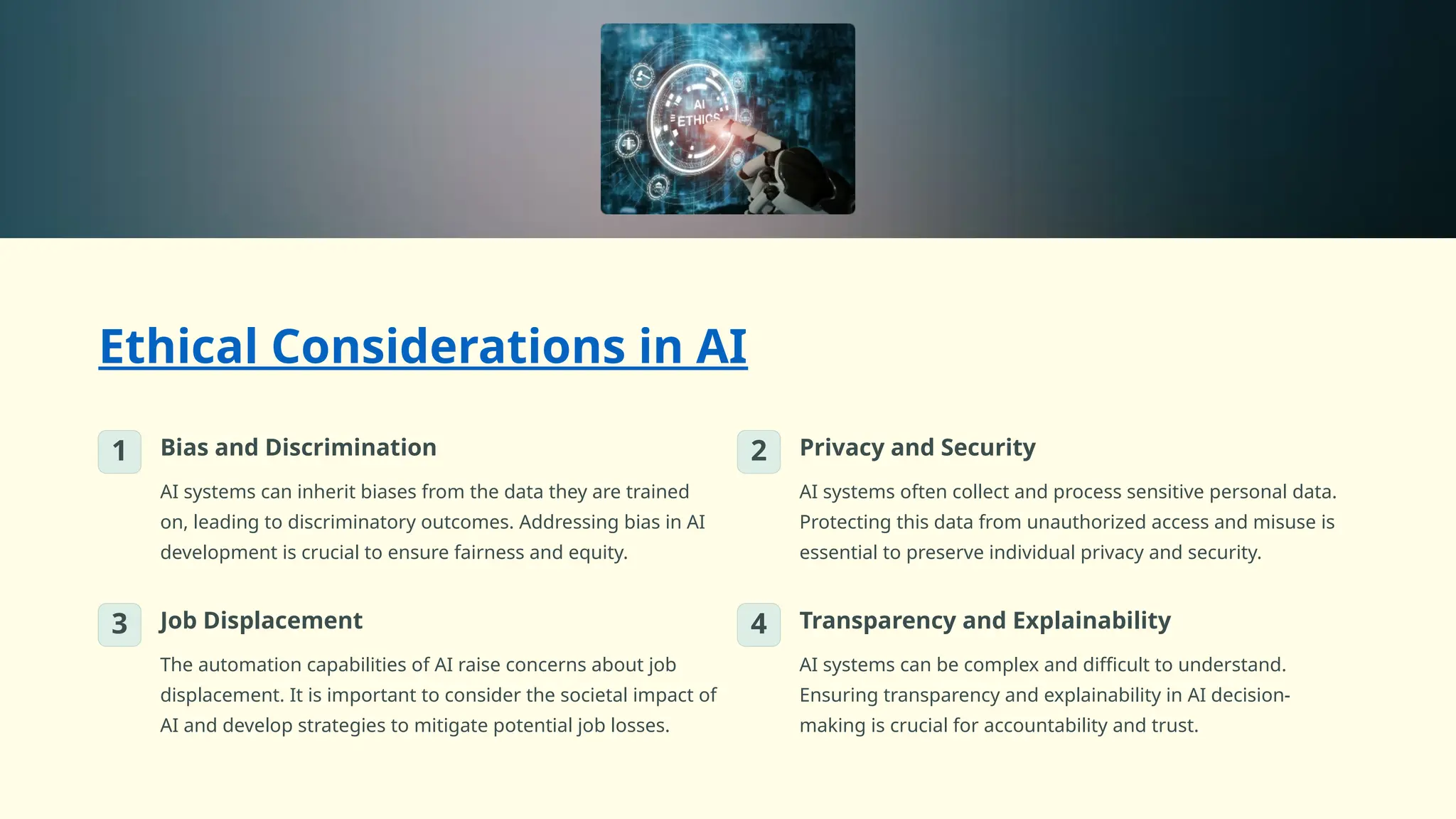Artificial intelligence (AI) is a transformative technology that mimics human intelligence through capabilities like learning and decision-making, with significant applications in healthcare, finance, and transportation. The development of AI has evolved from early concepts through periods of stagnation to a modern resurgence empowered by advanced machine learning techniques, such as deep learning. Despite its advantages in efficiency and accuracy, AI has limitations, including biases, privacy concerns, and potential job displacement, necessitating careful consideration of ethical implications and future trends.
